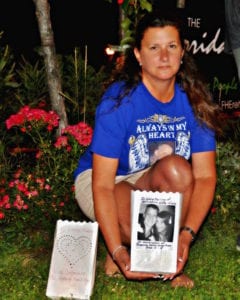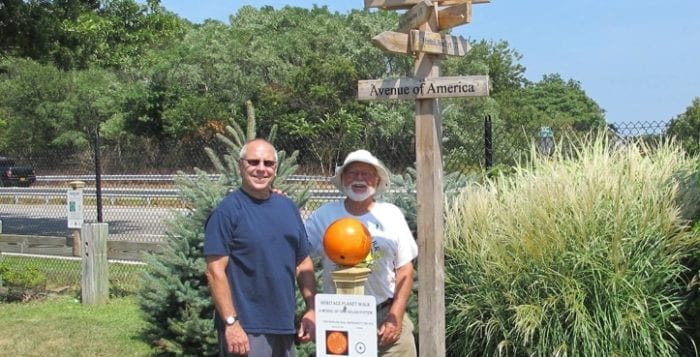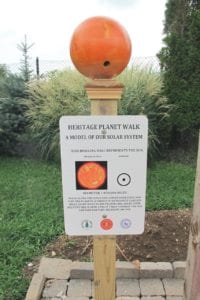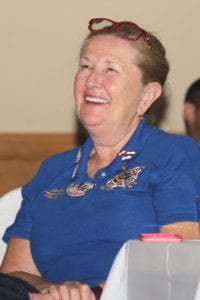Three Mount Sinai children began making music on the piano at a young age. Now their youth ensemble is making memories with residents across the North Shore.
Playing at veteran homes and senior centers, the North Shore Youth Music Ensemble, created by brother and sister Claire and Joshua Cai, focuses on giving back to the community through the arts.
“I know many people who do volunteer work, and I thought music would be a different thing to do,” Claire Cai said. “I feel happy when I play. It’s really nice to know that they appreciate our music and that they give us their time to play for them.”
The 17-year-old learned the violin and the piano at the same time from her mother Dana, who teaches the violin and viola to young students at her home. Claire Cai said she switched her focus to solely the violin almost 10 years ago because she thought there would be more opportunities.

One came knocking when she was accepted into the Juilliard Pre-College Division, which is for elementary through high school students who exhibit the talent, potential, and accomplishments to pursue a career in music. It’s a competitive program, yet the young talent only had to audition once. This month marks her fifth year in the program. She will graduate next year.
“It’s really inspirational,” she said. “I get to meet a lot of people there and I learn a lot from the teachers. It’s a good thing to surround yourself with other people who come from all around the world with different talents.”
Joshua Cai, 14, first learned the piano and violin, but after being rejected by the Juilliard program, switched to playing the viola. He was accepted into the school the following year.
“My sister was always the one that was better than me so it was satisfying to do the same thing as her,” he said.
Their father, Yong Cai, used to play the violin years ago and is currently a physicist at Brookhaven National Laboratory. While his oldest daughter Mattea no longer plays, she is attending The University of Texas at Austin, majoring in architecture, and she and her younger sister both draw. The father said he believes music was important for his children to learn.
“We just thought that they should learn to play music — it’s always a good thing for young kids to not only enhance them talent-wise, but it can help develop their personality and it’s a form of training your brain in some sense,” he said.

When he heard his children were creating an ensemble he was thrilled.
“It’s a way for them to appreciate how music can help others,” he said.
The two teamed up to create the core trio with friend Daniel Ma, who plays the cello.
“It’s fun playing with my friends,” the 14-year-old said. “It feels like any other performance, but you know you’re performing for seniors, and that makes you feel good about yourself.”
The trio sometimes performs with Claire Xu on violin and Xavier Tutiven on viola. Most recently, at the Rose Caracappa Senior Center in Mount Sinai, Xu played classical songs with the trio. Duet Katherine Ma and Rachel Zhang also performed for the crowd.
“It’s really nice because we’re able to spread our enjoyment of music to other people,” Joshua Cai said. “It shows up on their faces.”
Claire Cai’s favorite piece to play is Dvorak’s String Quartet No. 12 in F Major, Opus 96, “American,” because of its spirited vibe, while Daniel Ma enjoys Mozart’s Eine Kleine Nachtmusik for its classical elements, she said. At the most recent event, the ensemble also performed a more contemporary piece to close out the performance — “You Raise Me Up,” which was made popular by Josh Groban.

Michele Posillico, the manager for the senior center, said she loves when the ensemble comes to perform.
Their playing was “magnificent, over the top,” she said. “The parents’ hearts must be so full of joy to see their children play like that. It’s just remarkable. The seniors enjoy it. What this group of players from the younger generation is doing, their accomplishments, it fills their heart with happiness and love and pride. I just loved it — it brings tears to my eyes how they play.”
Yong Cai agreed, and added that he gets overly excited watching his children play.
“I take videos all the time,” he said with a laugh. “I go to all of their concerts when I can make it. They come to my house to practice and they really enjoy playing music. I have a huge collection of their performances. Some of which I post on YouTube.”
Although their parents instilled an appreciation for music in them, the musicians couldn’t imagine a life without it.
“It’s always been a part of my life and I don’t know what I’d do if I ever gave it up,” Joshua Cai said. “It’s the foundation of my everyday life. I’ve never experienced my life without music.”
To book the North Shore Youth Music Ensemble, email Yong Cai at [email protected], or call 631-403-4055.













 Tom and Nick Nagle of Letter Perfect Graphics formatted and printed the signs on metal sign plates, funds for the posts and screws were donated and Yvonne Francis of Port Jeff Bowl donated the bowling ball sun. Visit the Wedge and tour the Solar System by starting at the south end of the park. Look for the planet signs along the fence line and find out where Neptune and the dwarf planet Pluto would be in this model of the solar system.
Tom and Nick Nagle of Letter Perfect Graphics formatted and printed the signs on metal sign plates, funds for the posts and screws were donated and Yvonne Francis of Port Jeff Bowl donated the bowling ball sun. Visit the Wedge and tour the Solar System by starting at the south end of the park. Look for the planet signs along the fence line and find out where Neptune and the dwarf planet Pluto would be in this model of the solar system.






